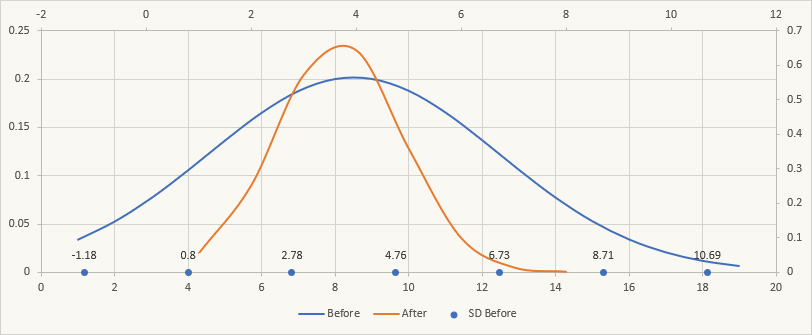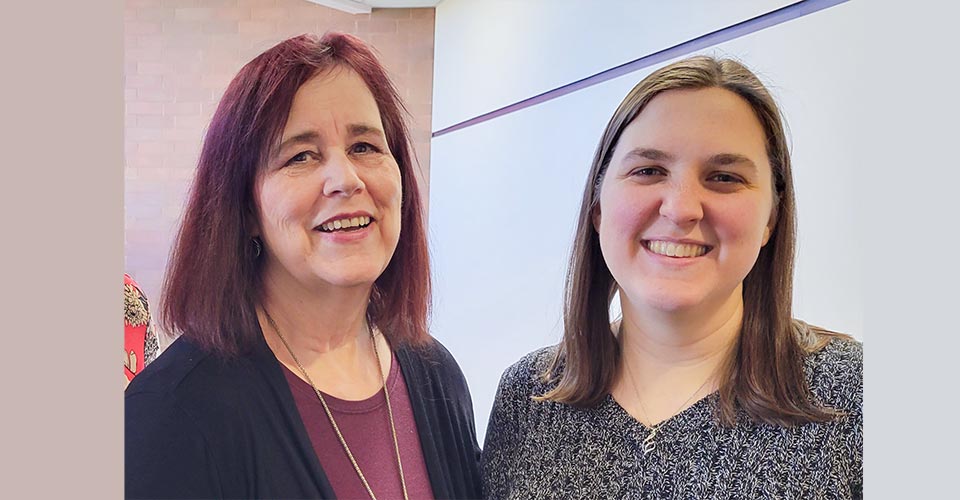Within the 12 divisions of the Accounting Department, staff were struggling to find current versions of documents in a timely manner in the shared drive. Time that could have been spent assisting students and employees was instead wasted searching for files in multiple locations with a variety of folder structures. A team of Robin Bauman, Emily Mach and former staff member Jodie Dillner used their LEAN Six Sigma Green Belt training to come up with a better method.
Briefly describe the challenge you were addressing with your project.
At the end of 2019, the accounting department had six new employees. The departure of their predecessors also meant the departure of knowledge on how documents were filed on the department’s share drive. With no clear method of filing electronic documents, each individual followed their own method that made sense to them. This could mean individuals were filing documents in the folder labeled with their name or in a folder labeled with a division of the department (e.g., Accounts Receivable). With both old and new filing “systems” in place, it was challenging for any individual to quickly find a document.
Describe the process you used to arrive at your solution. What LSS tools did you find to be most useful?
Our goal was to create a filing system on the shared drive that would make sense even to individuals who were new to the department. The SIPOC was a useful tool for our group because as we were completing it, we realized each division in our department had its own needs. This led us to look at a solution that would satisfy each division but still be clear enough for any individual navigating the share drive.
To start, we created an Excel spreadsheet listing all of the folders in the share drive. We had each individual go through the list and identify the folders they were currently using and which division it belonged to. Over a weekend all of the folders were moved to one folder labelled “Old Accounting” and new folders were created in the main drive for each division (Accounts Payable, Bursar, etc.). Using the list completed by staff, the currently used folders were moved to their appropriate division. Any items left in the Old Accounting folder were reviewed and moved by the green belt team at a later date.

A significant decrease in process variation was achieved.
Some documents are transactional and specific to a fiscal or calendar year – outgoing checks, payroll deductions, invoices. While other documents do not have a time period associated with them – banking information, instructions, templates. This knowledge steered us to a filing system for each type of document. Once inside a division’s folder there are yearly folders (fiscal or calendar) and broader folders (instructions, templates). The yearly folders allow quick access to items in progress and a smoother process for record destruction, should the department start routinely destroying documents beyond the University’s record retention policy. In each yearly folder there are folders for each task the division performs. This could be bank statements, invoices from third parties, or month-close-related items, just to name a few. The Green Belt team sat with the individuals of each division to determine if they used fiscal year, calendar year or both and which task folders should be in each yearly folder.
How did you get buy-in from colleagues?
The shared Excel spreadsheets were very nice because they allowed multiple users to be in the spreadsheet at the same time. Before sending out the spreadsheets, we met with the department to explain how to use them and answer any questions they had. We did not meet much, if any, resistance in this project because everybody agreed it was a problem but nobody had the time or solution to fix it.
Have you applied LSS principles to other projects, personally or professionally? If yes, how?
Emily: Completing these trainings has given me a different lens to use when analyzing processes. I am more easily able to identify waste and make changes to save time and resources for all involved.
Robin: I agree with Emily. Completing the training has helped me develop a more critical eye and I am working on making process changes both at work and in my home life currently.
What would you say to someone who is thinking about going for a yellow or green belt?
We all agree that the Yellow Belt training is very informative and a good introduction to those interested in learning more about LEAN Six Sigma. However, we would caution anybody thinking about the Green Belt to be aware there is much more work involved and to make sure you have the support of those affected by any solution you wish to implement. If we hadn’t had the support of our colleagues and supervisor, we are not sure if we would’ve completed the project even today.
Learn more about LEAN Six Sigma and sign up for the next cohort!
